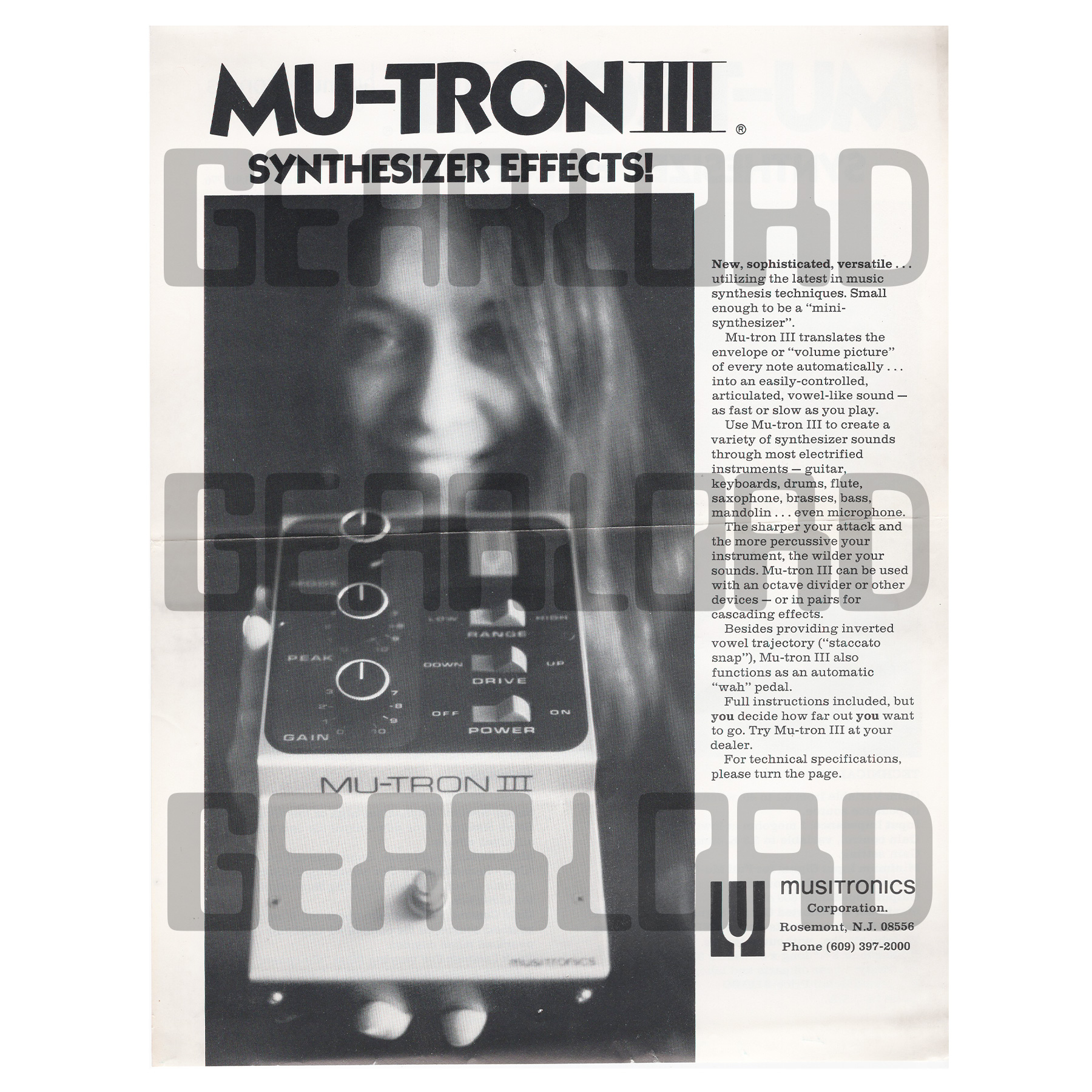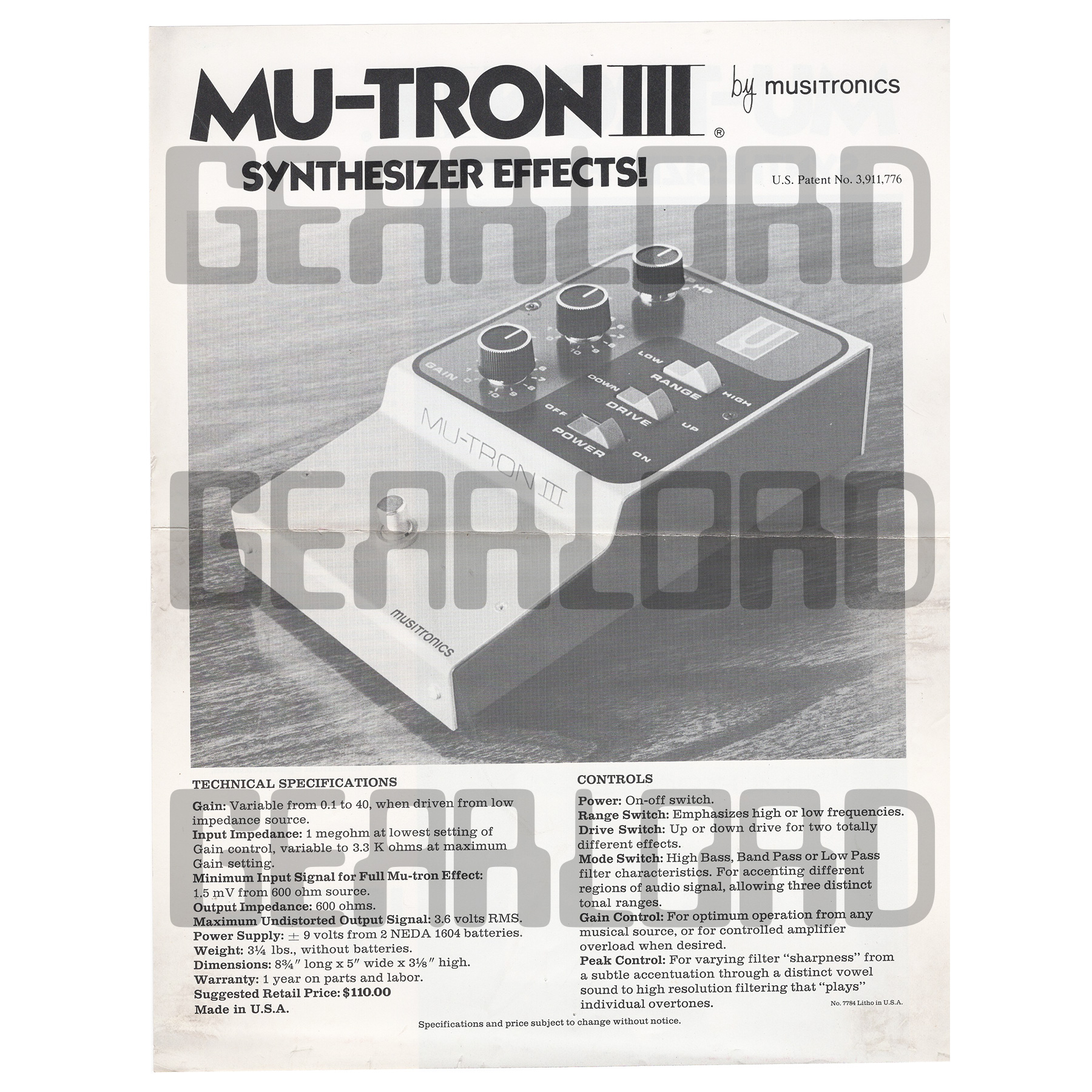1978 Musitronics Mu-Tron III Effects Pedal Catalog Advertisement Rare Original NOS Paper Promo FX Ad
Share this:
– For your consideration is this vintage 1978 Musitronics Mu-Tron III effects pedal advertisement.
– This original paper pamphlet was included with Mu-Tron III units when purchased new.
– On one side, the paper advert reads “New, sophisticated, versatile… utilizing the latest in music synthesis techniques. Small enough to be a ‘mini-synthesizer’. Mu-tron III translates the envelope or ‘volume picture’ of every note automatically… into an easily-controlled, articulated, vowel-like sound – as fast or slow as you play. Use Mu-tron III to create a variety of synthesizer sounds through most electrified instruments – guitar, keyboards, drums, flute, saxophone, brasses, bass, mandolin… even microphone. The sharper your attack and the more percussive your instrument, the wilder your sounds. Mu-tron III can be used with an octave divider or other devices – or in pairs for cascading effects. Besides providing inverted vowel trajectory (‘staccato snap’), Mu-tron III also functions as an automatic ‘wah’ pedal.”
– While on the other side “Controls: Mode (LP/BP/LP) selects the type of filter: Lowpass, Bandpass, Highpass Peak Controls volume of the cutoff frequency Gain adjusts the filter’s sensitivity to the signal of your instrument Range (Low/High) selects the frequency range covered by the filter envelope Down/Up selects the direction of the filter sweep: down or upwards Power (Off/On) switches the power on or off
Specifications: Gain: variable from 0.1 to 40, when driven from a low impedance source Input Impedance: 1 megohm at lowest setting of GAIN control, variable to 3.3K ohms at maximum gain setting Output Impedance: 600 ohms Minimum Input Signal For Full Mu-Tron Effect: 1.5 mV from 600 ohm source Maximum Undistorted Output Signal: 3.6 volts RMS Power Supply: ±9 Volts from 2 NEDA 1604 batteries or Musitronics Model PS-1 Battery Eliminator Dimensions: 8¾” l. X 5″ w. X 3⅛” h. Weight: 3¼ pounds (without batteries)”
If you have something like this, and you’re interested in finding out more or potentially selling yours, please click here.


